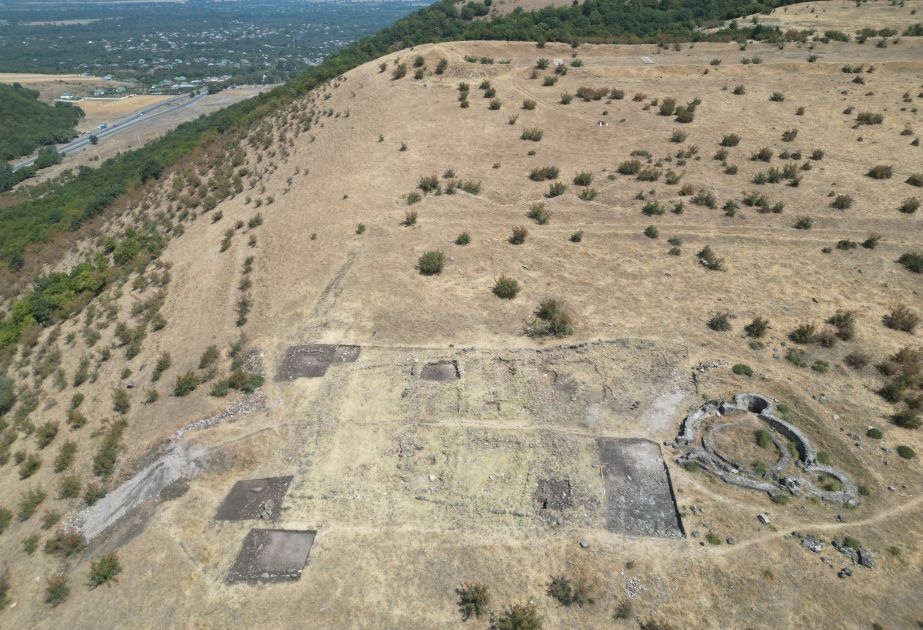Starting from July 17, the "Archaeological Research of Material and Cultural Heritage of Caucasian Albania" expedition, led by the Department of "Ancient and Albanian Archaeology" at the Institute of Archaeology and Anthropology, began its excavations in Gabala's Boyuk Amili village. The focus of the research was the Kilsadag Temple Complex located in this area., Azernews reports.
Archaeological research conducted in the acropolis surrounding the Kilsadag Temple Complex revealed the foundations of towers built on strategic locations, as well as the defensive walls of the area. These towers, which were constructed to observe the surrounding territories at a 180-degree angle, played a significant role in the defense of the area. The towers were built in rectangular and semicircular shapes, adapted to the terrain.
Speaking with Azertac, Dr. Natiq Alishov, Head of the Department of Ancient and Albanian Archaeology at the Institute of Archaeology and Anthropology and leader of the "Archaeological Research of Material and Cultural Heritage of Caucasian Albania" expedition, noted that, in addition to the defense structures, investigations of small-sized utility rooms with internal structures were also carried out.
The rooms contained artifacts mainly dating back to the antiquity, early Middle Ages, and the Middle Ages, including unglazed and glazed ceramics, bricks and tiles, glass vessel fragments, obsidian pieces, weapons, and iron and stone tools.
In 2024, excavations continued in a 12.50x12.50 m square (F) at the site, and a new circular architectural structure was discovered in the southwestern part near the Kilsədağ circular temple. The foundation of this newly discovered circular temple was built from rock, with a wall thickness of 1.40 m and a diameter of about 12.70 meters, parallel to a temple previously discovered in 1971 by archaeologist Rəhim Vahidov.
A section of the eastern wall of the new circular architectural structure partially overlapped with the lower part of the western entrance of the Kilsədağ circular temple, discovered in the 1970s. This, in turn, indicates the continuity of the ritual activities at the site, allowing for the study of the architectural development over time.
During the 2023-2024 excavations, remains of walls were observed in squares F and D, and future research will focus on the layers of cultural deposits in squares C, E, and G.
This research will provide an opportunity to study the northwestern and northeastern parts of the newly discovered circular temple. Each of the squares (A, B, C, D, E, F, and G) covers an area of 12.50x12.50 meters and was examined from west to east, in a north-south direction.
The changing cultural layers in the areas from the foothills to the summit of the mountain, along with the observation of defensive walls from the Paleolithic period to the Late Middle Ages, highlight the strategic importance of the area more clearly," emphasized the historian and researcher.
The archaeological research in the area conducted until August 25.

